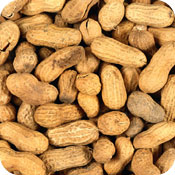 Like other B-vitamins, niacin plays an essential role in turning calories from protein, carbohydrates, and fats into energy. It also helps the digestive system function and promotes a normal appetite and healthy skin and nerves. Additionally, it's used to synthesize sex hormones.
Like other B-vitamins, niacin plays an essential role in turning calories from protein, carbohydrates, and fats into energy. It also helps the digestive system function and promotes a normal appetite and healthy skin and nerves. Additionally, it's used to synthesize sex hormones. Lean meats, peanuts, and yeasts are good sources of niacin. Women should consume 14 mg of niacin daily. Pregnant and nursing moms should consume 18 mg and 17 mg daily, respectively. Tryptophan serves as a dietary equivalent to niacin. 60 mg of tryptophan is roughly the same as 1 mg of B-3. Milk and eggs are excellent sources of tryptophan. B-3 deficiency can lead to muscle weakness, inability to eat, indigestion, and skin problems. In its worst form, it can lead to pellagra, a serious disease that results in diarrhea, mental confusion, and skin problems.
* Albacore (white) tuna has more mercury than canned light tuna. When choosing the recommended two meals of fish and shellfish a week during pregnancy, you may eat up to 6 ounces (one average meal) of albacore tuna. Find more information on eating fish and seafood during pregnancy. This article was reviewed by Tanya Jolliffe, a BabyFit healthy eating expert. |
Niacin: The Energy Converter
Other Key Nutrients for the Mom-to-Be
Page 1 of 1





Member Comments